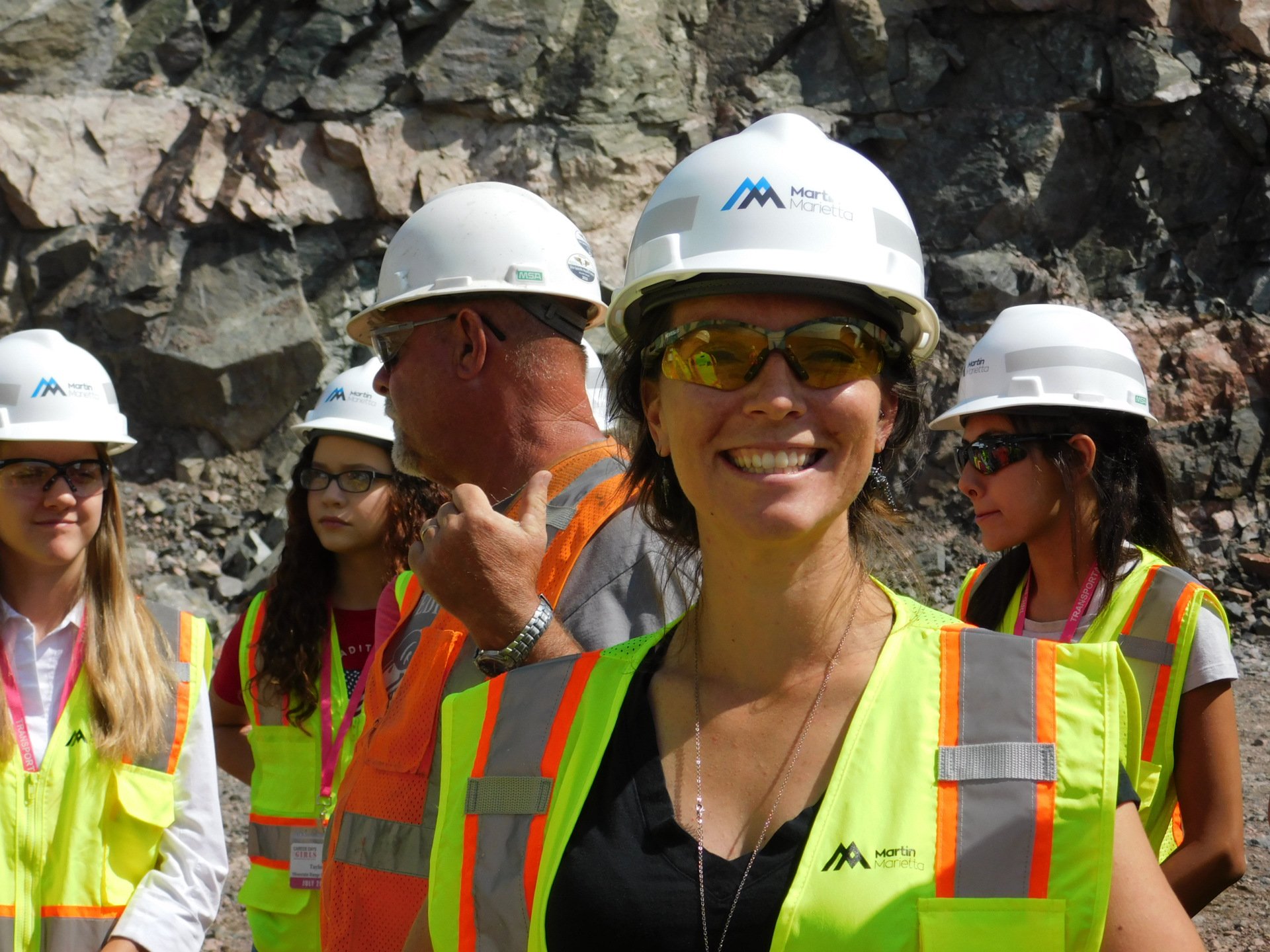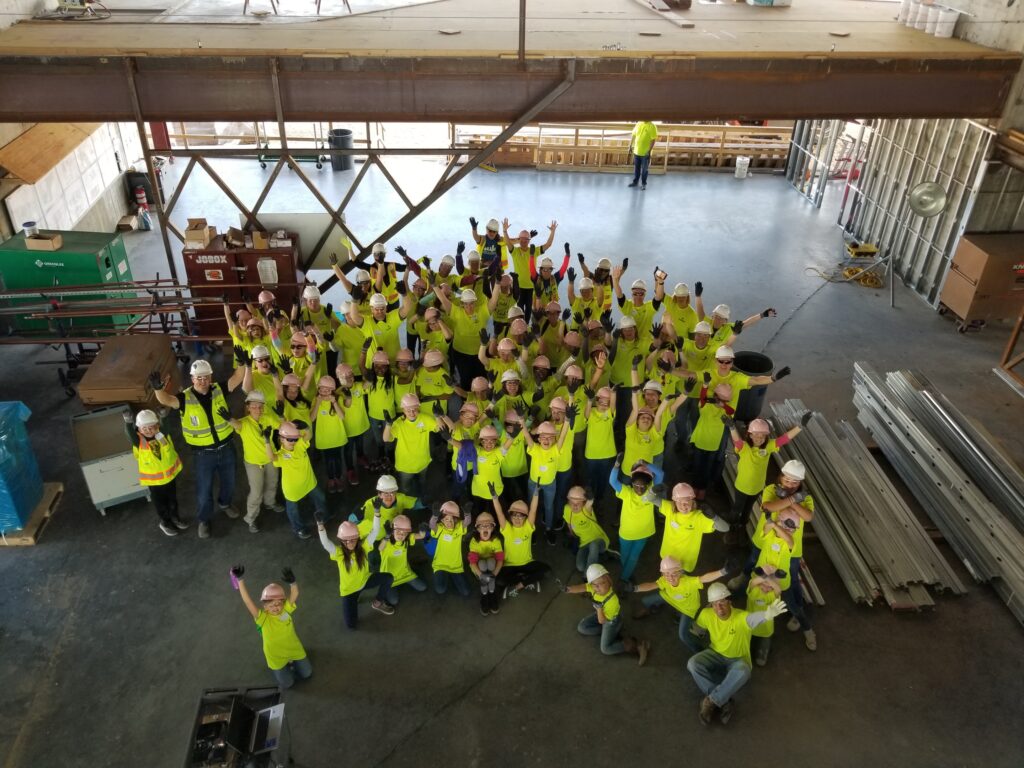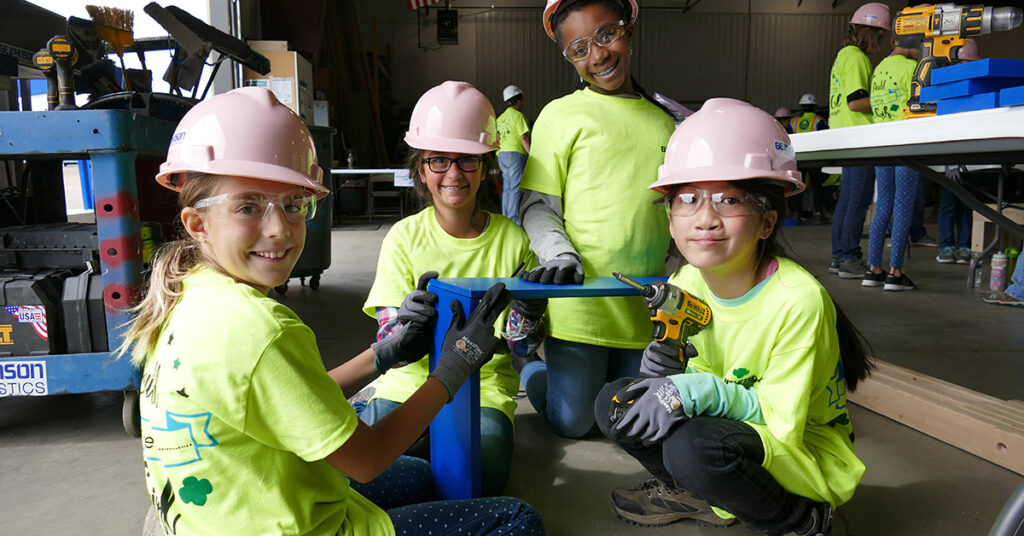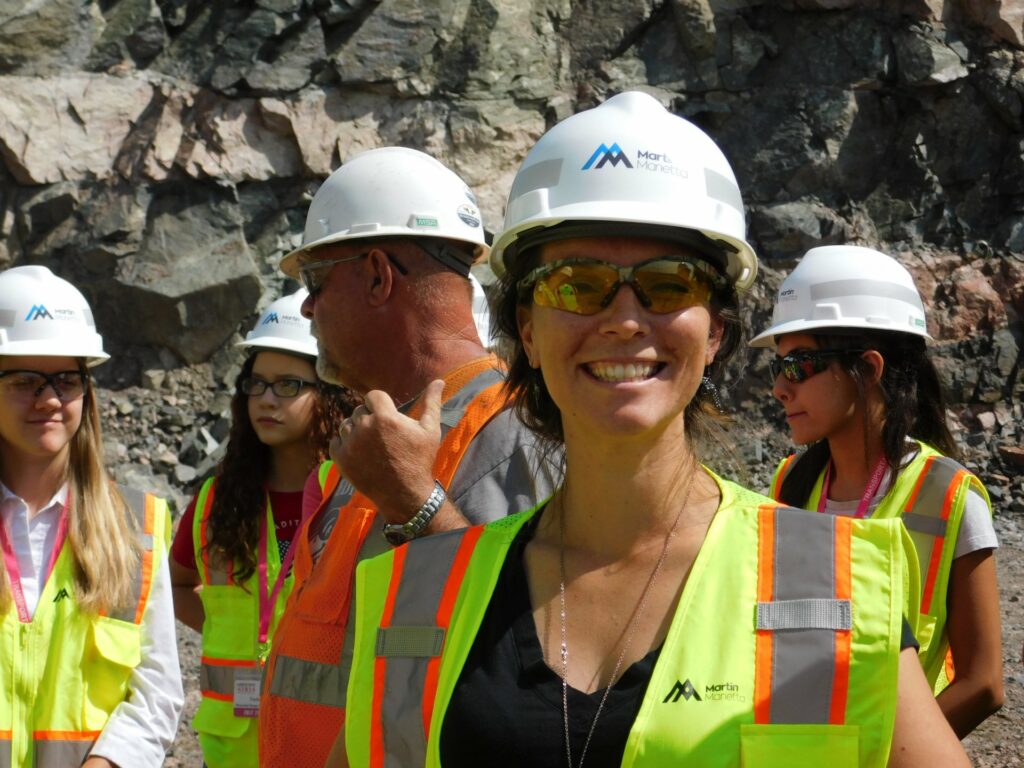
For many, the story of a career in construction is about seeing an opportunity, taking hold and making it your own. Sadly, socially prescribed gender roles and constricted perceptions of construction as physically demanding, low-intellect work have combined with a lack of accessible entry points to largely keep women out of the industry. In this round table discussion, Colorado Construction and Design was joined by an esteemed panel of construction professionals who are eager to see change and make an impact. Covering the state of the industry; the unseen opportunities for the next generation of builders; and the difference a day can make in the lives of young women, read on. Then tell a little girl you know; she can do it.

Meet the Panel
Dana Scoggins, President
National Association of Women in Construction – Colorado Chapter
Dana Scoggins has been in construction her whole life. Born into the industry, her father was a general contractor and she was raised in the workforce. Today, she is the President of the Colorado Chapter of the National Association of Women in Construction, whose core purpose is to enhance and promote the success of women in the construction industry. She is also the Controller for Heggem-Lundquist, a painting and drywall contractor in Denver. She also co-owns a California-based Fire Sprinkler Company with her husband and has worked as an independent contractor for both Intuit & Sage, consulting on Sage 100 Contractor software. She is a certified trainer, coach, and speaker through the John Maxwell Group.
“I love the Construction Industry! This industry has afforded me opportunities that I would not have had otherwise. You have an amazing sense of accomplishment when you are a part of building something from the ground up. Women have a place in this industry and the NAWIC is here to help them find it by offering professional, educational and business opportunities, and awarding undergraduate and construction trades scholarships.”
Leela Rajasekar, Director of Construction
Douglas County School District
Leela Rajasekar earned a master’s degree in civil engineering from the University of Colorado Denver and has spent the last 20 years helping to build Colorado’s infrastructure. Her career includes an extensive tenure with the Colorado Department of Transportation where she has had her hands deep in traffic safety and identification and prevention of hazards on state highways. Currently, the Director of Construction for Douglas County School District, Leela enjoys the student reactions to facility improvements and the sense of excitement small changes can bring.”
“Construction offers a chance to improve people’s lives. Studying a traffic situation and coming up with a solution that reduces the number of accidents at an intersection is a feeling of accomplishment that never fades.”
Keller Hayes
HOYA Foundation / Transportation & Construction Girl
Keller Hayes comes to construction through life experience. She grew up on a ranch, 50 miles from anywhere, and when a road needed to be repaired the family had to figure out how to get it done. At the HOYA Foundation, Keller manages a program focused on empowering people to succeed in construction. The HOYA Foundation mentors small businesses, provides training and resources on construction issues, and sponsors a series of innovative programs focused on increasing the number of women in the transportation and construction workforce.
“The girls in our programs are exposed to an incredible range of opportunities they didn’t know existed. Transportation and Construction Girl opens their eyes to the possibilities and builds self-confidence in young women that can last a lifetime.”
Stella Hodgkins, Corporate Citizenship Manager
Stella Hodgkins’ path to construction began after she had already started toward a career in science and medicine. She returned to college in her late 20’s to earn a degree in interior design and joined an architecture practice shortly after. She then transitioned from design to sustainability consulting and eventually joined GE Johnson as an in-house sustainability specialist. Today, she is enjoying a new role with the firm, Corporate Citizenship Manager, a many-faceted position intersecting people, process, and performance.
“I love seeing a building come to life. It’s one thing to see it on paper, but quite another to see it rising out of the ground. There is a lot of problem-solving and innovation happening every day to make it come to fruition. GE Johnson is committed to being a positive force for women in the industry. We want more women to feel the incredible sense of accomplishment that comes from being a builder.”
Where does the Advancing Roles of Women in Construction conversation start?
“Advancing the role of women in construction for me starts with the fact that only 9.1 percent of American women work in the construction industry,” says Keller Hayes, of the HOYA Foundation. “There are lots of ways to bring more women into the industry, and right now more than ever the opportunity is there.”

Exposure this job sites empower young women to see a career in construction as both interesting and advantageous.
According to the Bureau of Labor Statistics, Hayes is more than right, there is an immense untapped job market for women that seems ripe with opportunity. The Bureau’s 2016 general construction statistics reveal that approximately 9.3 million men worked in construction professions compared to just 939,000 women nationally. It also reports that while women in the U.S. earn on average 81.1 percent of what men make, in the construction industry that gap is nearly closed, and women earn on average 95.7 percent of what men do.
“Many people, men, and women alike including educators and guidance counselors don’t understand the wide range of roles, responsibilities, and technologies that exist in construction,” says Dana Scoggins, who has held a wide breadth of responsibilities over her 30-year career. For most non-industry people, construction looks a lot like field labor – hard hats, jeans and work boots, swinging a hammer. Those in it know there are more desk jobs than day jobs and more math than muscle. In construction, difficult challenges are rarely solved without collaboration and multi-faceted analysis and they are never almost never solved by physical strength. In 2019, general contractors of every size and specialty are engaging the leading-edge in three-dimensional building information modeling, critical path management scheduling, IT, AR/VR, and drone technology as part of their everyday lives.
“Meeting W/MBE criteria has been the industry’s primary reaction to the need for greater diversity in many regards,” says Leela Rajasekar, Director of Construction for Douglas County Schools. “Women represent half of the population, so there is a huge opportunity for growth here, but we have to provide the industry with tools to help.”
What is being done to bring more women into construction?
“Companies and individuals being proactive is what makes changes in this industry,” says Stella Hodgkins, Corporate Citizenship Manager for GE Johnson. In partnership with the Girl Scouts of Colorado, GE Johnson hosts a program called Build Like A Girl. This first-hand, day-long construction experience introduces 100 scout Cadettes and Seniors to the complexities and opportunities of big-time commercial construction. Working alongside GE Johnson employees, Scouts build little free libraries; learn about the many roles in construction and tour an active construction site. The September 2019 group got a behind the scenes look at the new U.S. Olympic Museum in Colorado Springs, seeing up close the inner workings of the building process.
One of the biggest challenges the construction industry will soon face is the wealth of knowledge leaving the industry as senior leadership retires. Many analyzing industry workforce projections predict a significant labor shortage and likely skills gap if more young workers don’t follow a career through construction. The HOYA Foundation’s Transportation and Construction Girl program strives to prove the potential of the construction industry through hands-on introductions.
“Transportation and Construction Girl is focused on opening young women’s eyes to the possibilities of construction” shares Keller Hayes. Committed to making a dent in the 9.1 percent, Transportation and Construction Girls hosts an annual lunch event and summer career days for young women between 13 and 20 who are interested in learning about the industry and its opportunities. Many of those who lend their time and expertise to the program’s success are, of course, professional women from Colorado’s booming construction industry. Having role model examples on hand is critical to eliminating common misperceptions. “We had over 600 participants at the last Transportation & Construction Girl event. One girl remarked that she’d never seen so many professional women in the same room.”
In both programs, observers routinely note how much more involved and engaged young women are when all the participants are females compared to mixed company. Shedding the idea that construction is only for boys is the first step for these young women. Recognizing that construction is still very much a male-dominated profession is the first step for the industry.
What challenges are there for women in construction?
“There are still issues to overcome, especially for women in the field,” says Scoggins, whose role as President of the Colorado Chapter of National Association of Women in Construction keeps her keenly informed. Unfortunately, as many in the industry are aware, women are still subjected to remarks, harassment, isolation, job insecurity, and even Personal Protective Equipment (PPE) is typically designed for men. There needs to be change in the workplace culture. This speaks to the importance of men in fostering the development of women in construction.
Hodgkins nods in agreement. Though somewhat new to her role as Corporate Citizenship Manager, she is invigorated by the responsibility and realities in equal measure.
“Leadership in any workplace initiative has to be modeled from the top down,” says Hodgkins. “Corporate diversity programs may be authentic, but the attitudes and actions of the firm’s leaders are what makes the difference in the way other employees behave. Incorporating behaviors that empower women is an important first step.”

“Public entities, heads of companies, leaders of industry all need to step up and support advancing women’s roles in construction and many other fields,” says Rajasekar, whose perspective is informed by more than 30 years in the public sector at CDOT and now Douglas County. “We also need men to raise awareness, look for ways to increase inclusivity. Don’t ask women to be note-takers, instead show that you value their input in key decisions.” “Seeing women in leadership roles makes a big impact. We enjoy career days with the RTD, whose leadership is 38 percent women,” finishes Hayes of one of the Transportation and Construction Girl programs long-time supporter. Indeed, 9 of the RTD’s 15-member board are women. “When the General Manager of RTD comes down to talk to these young women and says if you’re ready to work, we want you in this industry, that has a big impact.”
About the Author
Sean O’Keefe is an who crafts stories and content based on 20 years of experience and a keen interest in the people who make projects happen. You can reach him at sean@sokpr.com | 303.668.0717
